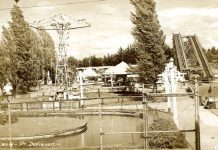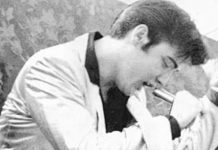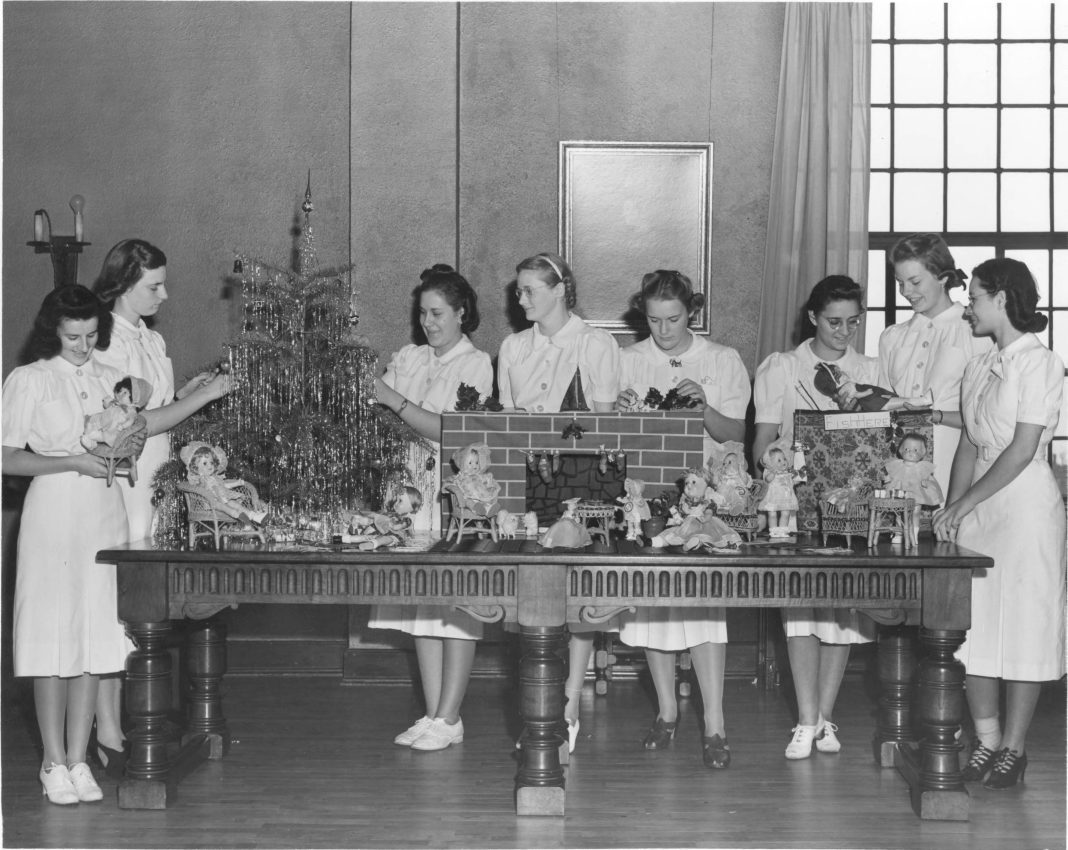From 1932 to 1938, Tacoma’s Annie Wright Seminary, now Annie Wright Schools, held an annual doll bazaar. One of the school’s most anticipated events, the bazaar included a parade, puppet plays, displays and a candy sale.
Annie Wright School opened in 1884 as an Episcopal boarding school for girls. By the 1930s, the school, located at 827 Tacoma Avenue, offered day classes as well and enrolled boys in kindergarten classes.
Annie Wright Doll Bazaar
The Great Depression was a difficult time to do any fundraising, but students at Annie Wright did their best. Students formed a missionary fund club to benefit the diocese’s Bishop’s Mission Fund, which helped children in need. The annual doll bazaar helped raise money for this fund.
Held the first Saturday of December, the event opened the school’s holiday season before Christmas break. Other seasonal events included caroling and a pageant or play. The pageant’s theme in 1933 was an old English Christmas, and in 1934, a Russian Christmas.
But of all these events, the doll bazaar was the favorite. “Nothing in all the year at the Annie Wright Seminary holds greater pleasure in store for both grownups and children than does the annual Christmas Doll Bazaar,” the Tacoma News Tribune reported in 1933. The event was organized by students, mothers, alumni and friends of the school. Held in the school’s Great Hall, admission cost a dime.
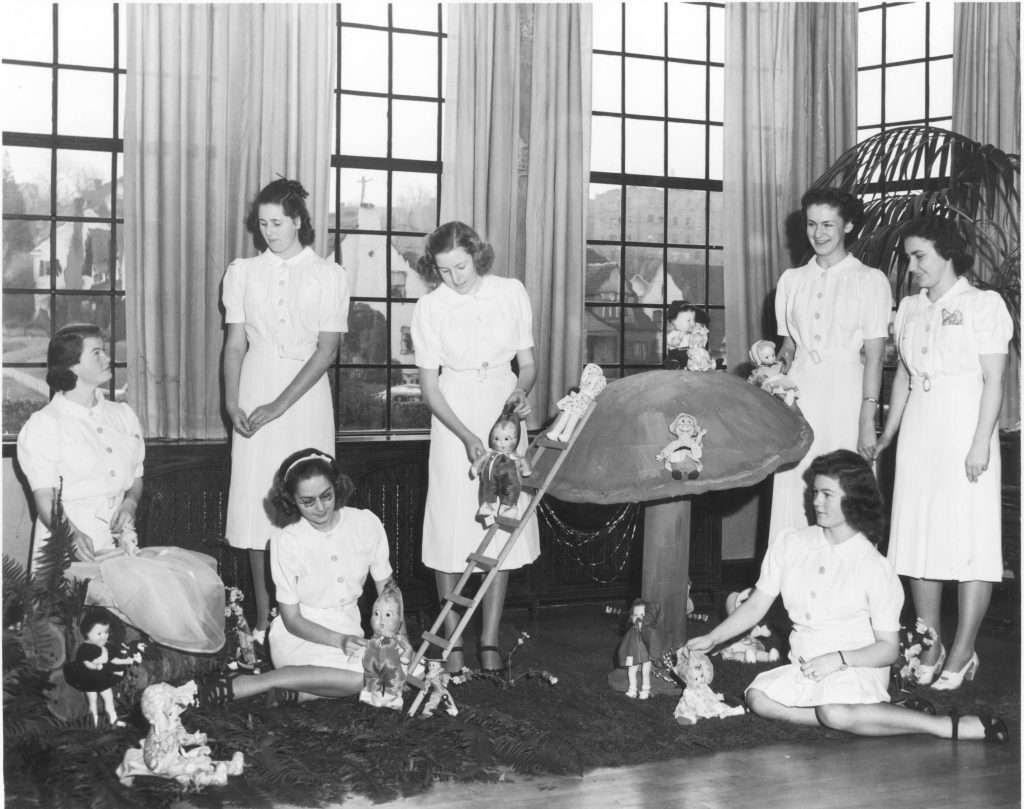
Doll Parade and Performances
A program opened each year’s bazaar. Girl students from the younger grades, kindergarten through fourth grade, marched in pushing doll buggies they had decorated for the occasion. An older student played the piano. One year, the pianist played “March of the Toy Soldiers.” These dolls were not sold. A group of community women judged the buggies, offering blue ribbons for the most beautiful doll, best-dressed doll, best-dressed baby doll and best character doll.
After the parade, there would be performances. Sometimes, Kindergarteners gave a dance-drama. In 1934, they depicted Santa Claus buying dolls and toys from a “doll keeper.” In other years, there was a puppet show. In 1937, a University of Washington puppet group performed “Snow White and the Seven Dwarves,” capitalizing on the popularity of the recent Disney animated film. In 1936, the Kindschi performers did their own puppet show.
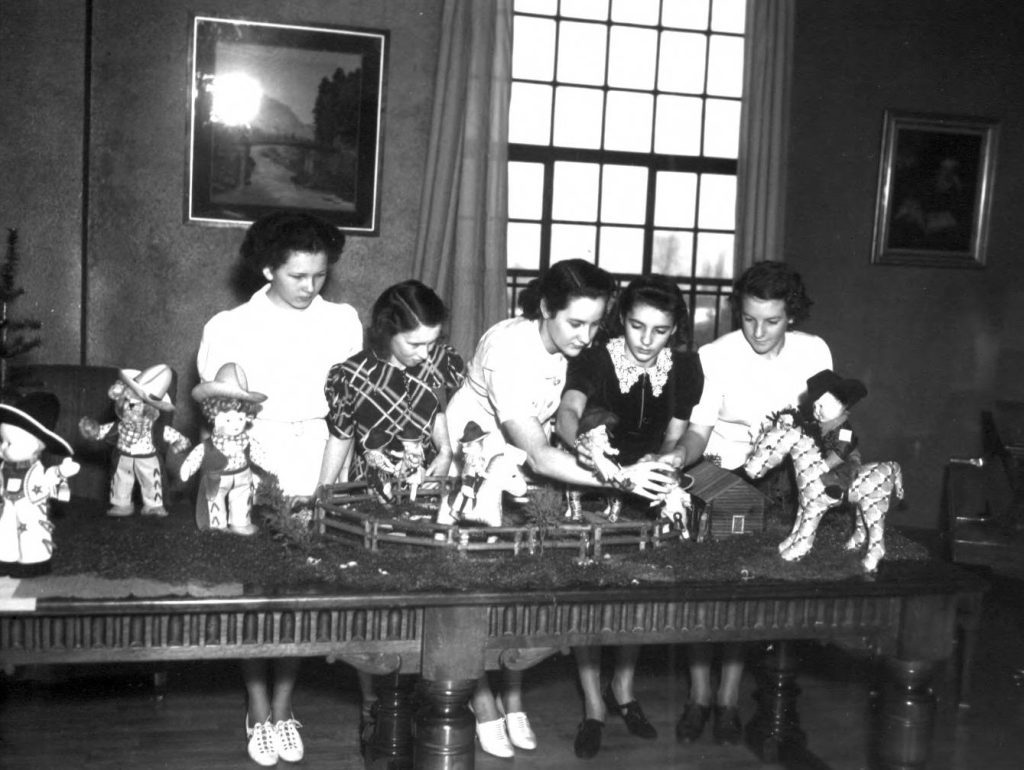
Tea and Doll Displays
After the performances, older students served tea to the guests. They also operated a candy booth, selling homemade candy, ice cream and cookies. In 1937, the children served cookies shaped like dolls! Other students ran a fishpond, a game where children “fished” for prizes. In 1934, there was even a balloon shooting gallery.
Every student dressed a doll to be sold. Dolls ranged from fancy French dolls to international dolls and simple rag dolls. These dolls, urged the Tacoma News Tribune in 1935, were really “little folk” “who deserve to be members of some small girl’s cherished family — rather than just another plaything.” “Dolls,” they declared, were “to rule the day.”
But perhaps the favorite part of the whole bazaar was the displays. Some guests brought antique and international dolls for show from their private collections. These were not for sale. The AAUW, for example, displayed a collection of such dolls in 1933.
But most of the booths were designed by students from all grade levels, by class. These booths were also judged. Themes could be creative. “Seniors of the school,” reported the Tacoma News Tribune in 1933, “will present a ‘Santa Claus’ Workshop.’ Juniors have planned to exhibit their ideas as to what the 18 seniors will be 20 years from now, their dolls promising much in the way of amusement. Sophomores are filling their booth with dolls who step down from nursery rhymes. Freshmen announce a birthday party for their group, while seventh and eighth-grade pupils will have Day Nursery.”
Themes changed over the years. In 1932, themes included fairy tale characters, while another booth, reported the Tacoma News Tribune, looked “strangely like the famous shoe in which an old woman lived, will be filled with baby dolls. Mother Goose and her children will find another habitation and a special booth will be filled with dolls dressed to represent seminary girls — in uniform and party frocks.” In 1935, themes included a Santa Claus’ Workshop from the Juniors and Seniors, a ski tournament, a fair, and a map of the United States. Other themes over the years, shown in photographs from the Tacoma Public Library Northwest Room, included a circus, a European village, a cowboy ranch and historical American scenes.
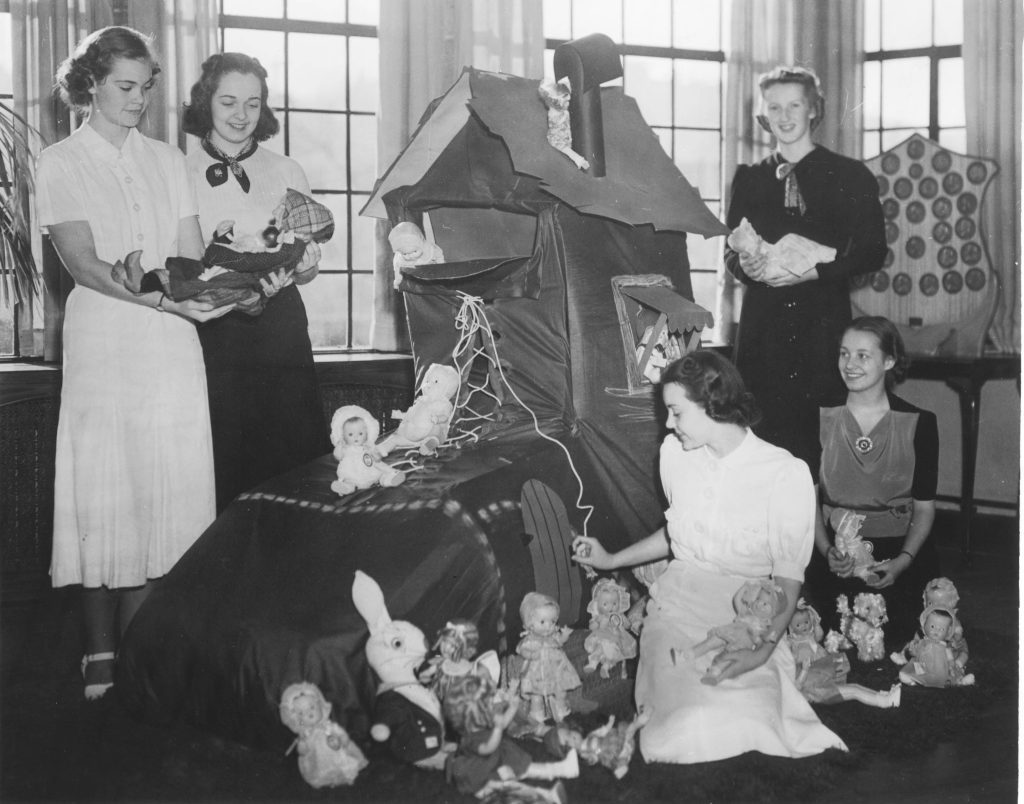
Later Years for Annie Wright School
While the last doll bazaar was held in 1938, Annie Wright School has continued to thrive. The school has since secularized and enrolled boys and continues to provide an excellent education to area students. And dolls remain a favorite childhood toy for many little girls.
























